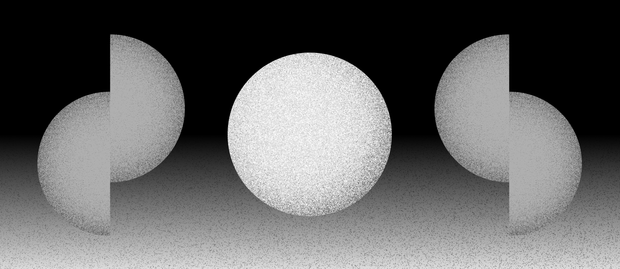
In recent years, NFTs have become a prominent topic in the digital world, captivating the attention of both enthusiasts and the mainstream audience. Although there may be a few individuals who have not yet heard of NFTs, it is difficult to fathom how they managed to overlook the emergence of this new digital asset and the surrounding hype.
Invented in 2014, a non-fungible token, or NFT for short, steadily started gaining interest until experiencing a mini-boom in 2017. All thanks to collectible images of drawn cats named “Cryptokitties” that were sold for thousands of dollars and formed the base audience for the new asset. Finally, in 2021, NFTs grabbed the headlines when Christie’s auction house sold Beeple’s NFT for $69.3m. After that, the NFT trend reached mainstream media and audience, raising a few essential questions: “What is NFT art?”, “Can NFT artworks be considered real art ?” and “What's the value of NFT?”
In this article, we’ll help you understand those questions about NFT art, so you can dive into the world of digital art more prepared. But first, let’s cover the basics.

What is NFT Art?
If we consider a $100 bill, its face value remains constant, making it comparable to another $100 bill or two $50 bills. This exemplifies the concept of a fungible token, which can be freely exchanged without any alteration in value.
However, there are things in the world whose price is based on more than units. For example, a can of soup would cost mere dollars, but 32 Campbell's Soup Cans became a new masterpiece thanks to Andy Warhol's artistic vision. So now they are worth more than the cans on their own, not only in monetary value but artistic too.

NFTs are an example of such an asset. Each token is unique and can be held only in a single online wallet. It provides buyers with proof of ownership over a digital copy. With NFTs, galleries and museums can monetize any painting, statue, or other art forms without giving NFT artwork buyers copyrights over the originals.

Art and NFT: Heaven and Earth?
Despite the hype and growing audience, the topic of NFT in art was a subject of heated debate. NFTs were often much criticized due to the doubtful value of some represented artworks, questionable aesthetic value, and even accusations of being a financial bubble. As a result, NFTs and art were portrayed as opposites. However, with the market becoming more mature, a logical question arises: what if there was a way to put real art behind an NFT painting and make it a valuable asset for collectors and galleries alike? That’s where Digitised.Art comes in.
The primary objective of the Digitised.Art platform is to match new generations of collectors with the most respected art institutions worldwide. We help them streamline the discovery process and foster connections through an accessible online platform. At Digitised.Art, visitors can access meticulously curated high-quality collections and buy artwork as NFT from a hand-picked list of galleries.
NFT Meaning in Art and How It Changes the Art World
Fresh breath for Galleries
During the Covid-19 pandemic, galleries and museums suffered significant financial losses and had to adapt to the new environment. Some faced the need to auction their art pieces to keep working. Some started offering new inclusive and exclusive services to attract new visitors. Even now, as the global pandemic has officially ended, digitalization of the art assets has remained on the to-do list of many art establishments.
For example, USC Museums Interim Director Bethany Montagano pinpointed that the public wants to experience art without geographical or financial limitations. Thus, potential visitors may be interested in buying art as NFT. On the one hand, it is an accessible and responsible way to own a painting for the audience. On the other hand, galleries generated new revenue streams.
Digital preservation
At Digitised.Art, we firmly believe that the integration of NFTs and art holds the key to effectively preserving masterpieces in digital form for future generations. By storing them on Blockchain, galleries no longer face the dilemma of selling or relocating their precious originals.
This revolutionary approach not only safeguards the physical integrity of the originals but also allows collectors to participate actively in the preservation process. By acquiring NFT drawings of desired artworks, collectors can enrich their collections and contribute to the perpetuation of artistic heritage. This symbiotic relationship between digital NFTs and traditional art paves the way for a new paradigm in art preservation and accessibility.
Increased outreach
NFTs provide an opportunity to expand and engage with the previously uninterested or unreachable audience. By integrating art NFT, galleries and museums can create new interactive experiences, like allowing buyers to vote on the following exhibitions, giving access to exclusive content or events, or providing new unique services. In addition, as NFTs can be bought and sold online, there are no space limits. Thus, art institutions can gather new supporters worldwide, increasing their short-term and long-term sales.
Collecting Art as NFT with Digitised.Art
Understanding the true value of combining art and NFTs, we use the Digitised.Art platform to curate and promote digital art collections from top-tier galleries and artists, bringing trading and collecting opportunities for galleries and collectors alike.
Benefits for Galleries
We offer a digital platform where galleries can connect with new collectors and increase the value of their artworks. As a result, galleries like Capsule Shanghai and Ciaccia Levi already boost their income, expand outreach, attract new audiences, and share their vision without losing ownership over their masterpieces.
Benefits for Collectors
Using Digitised.Art as the new way to interact with art, collectors can secure their collections in the digital realm through exclusive art NFTs. That way, they not only contribute to the success of artists and galleries but also preserve art pieces invulnerable to physical damage in digital space.
Visit Digitised.Art and discover how to start benefiting through secure and backed by real value NFTs.
Related articles




